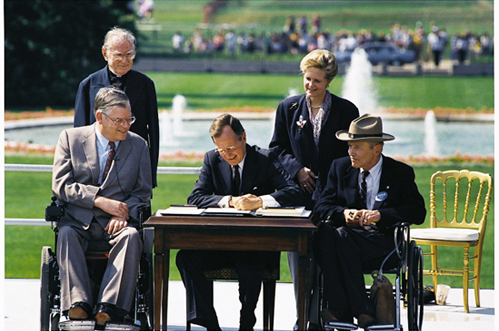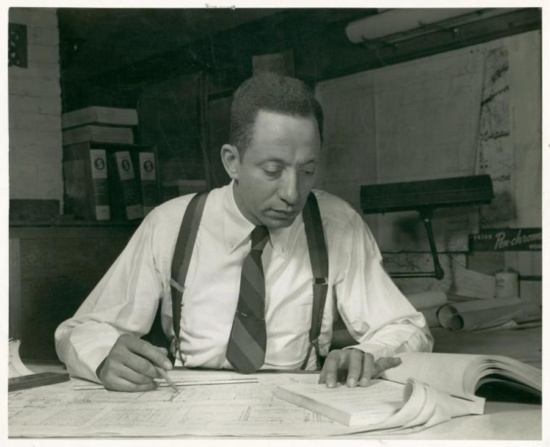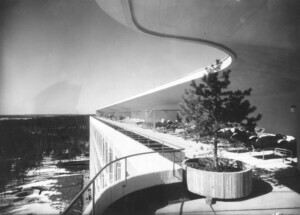In the United States, people with disabilities in the architecture profession and architectural academia are statistically invisible. Neither the American Institute of Architects, the National Council of Architectural Registration Boards, nor the Association of Collegiate Schools of Architecture collect data on the number of architects or architecture students in the United States who self-identify with physical or cognitive disabilities. The groundbreaking report, “Inclusion in Architecture,” published by the J. Max Bond Center on Design for the Just City at the Bernard and Anne Spitzer School of Architecture at the City College of New York, does not include data on disability.
The lack of knowledge about disabled architecture students and architects in the United States stands in contrast to other strides made in diversification, equity, and inclusion. The profession’s self-examination—statistically and culturally—has forced a significant transformation in who can become an architect in the United States. Looking at attendance in colleges, faculty appointments, and representation at professional events, architecture appears to be a more diverse profession in terms of race and gender than it was 50 years ago. From celebrated architects to the deans of the most elite architecture schools, we can see efforts at diversification making a mark.

Diversification is critical in architecture because ideas about race, gender, ability, and disability are formed and reproduced in the design and construction of buildings and urban spaces. The absence of disabled architecture students, architects, and particularly academic and institutional leaders within the United States relegates people with disabilities to being a a topic of discussion versus agents of change. In fact, a strand of disability theory argues that disability is a relative category, constructed in spaces that produce disabled bodies and minds. But whether perceived as innate or relative, a medical sensibility underpins many discussions of disability in architecture, because if people with disabilities are considered at all, it is as the subjects within spaces as opposed to the creators of them. This is due to several structural issues that prohibit people with disabilities from envisioning a future in which they participate in architecture in all its myriad manifestations.
One key area that limits accessibility to architecture as a profession is the actual buildings where architecture education takes place. While numerous architecture schools are entirely accessible to people with disabilities, the majority of the elite Ivy League schools of architecture—Yale University, Harvard University, Princeton University, Cornell University, the University of Pennsylvania, and Columbia University—have historically had physically inaccessible spaces for people with lower-limb disabilities. In the 1990s, years after the passage of the Americans with Disabilities Act (ADA), Yale, Princeton, Cornell, and Columbia still contained facilities inaccessible or difficult to access for people in wheelchairs. Almost all of these schools of architecture have been renovated, but key spaces—lecture halls (particularly the podium of the lecture hall where people speak), pin-up spaces, offices—remain either inaccessible or difficult to access. Again, many schools have these problems, but these elite institutions have a disproportionate influence on the profession.
We have lost out on multiple generations of architect leaders with disabilities who might have offered key perspectives on architecture, not only because of the barriers literally constructed in the architecture of elite institutions, but also due to the ways we imagine the production of architectural knowledge. For example, architectural education requires a thorough knowledge of historic precedents, but how do we imagine the spaces in which this knowledge is acquired? Consider the imagined physical commitment required to understand the discipline’s history, embedded in sites such as the Acropolis of Athens, the Roman Forum, or Teotihuacan, among numerous other examples. For the able-bodied, these sites are challenging places to visit—an observation confirmed by the writings of architects including Le Corbusier, Louis Kahn, and Alvar Aalto.
But both the Acropolis and the Roman Forum were far more easily navigated thousands of years ago (by contemporary standards) than they are today as “modernized” sites of architectural preservation. The early 19th-century Romantic notion of experiencing ruins under physical exertion has been permanently built into the experience of many important architectural monuments. This is a key aspect of historiographical aesthetics virtually unexplored in the literature or teaching of architectural historical practice. In other words, a romanticism of the body’s relationship to historical spaces hangs over the experience of architectural history, one that is furthered in the descriptions of these remote sites in classrooms and our expectations regarding the experience of the past.

If the design of spaces of education and historical knowledge shape ideas about the abilities of architects, then the physical spaces encountered within architecture internships also require critical analysis. The ADA has enabled people with physical and cognitive disabilities in the United States far greater access to all types of buildings and public spaces. However, the ADA does not govern all construction sites. Even if architecture schools in the U.S. make a concerted effort to improve accessibility, there are several impediments to students with various disabilities becoming architects. It is virtually impossible to undertake an architectural internship without being able to navigate the relationship between the making of architectural representations in offices and the material assembly of architecture on a construction site.
To imagine the increased accessibility of construction sites is utopian but necessary, primarily because doing so would re-envision the types of people who create architecture tout court. Labor unions might pursue this to further workplace safety. The latter is a staggering problem in an industry that is extraordinarily and needlessly dangerous: Over a 45-year career, someone working construction will have a 75 percent chance of acquiring a disability from a workplace injury. Construction work accounts for only 3 percent of employment in the United States and almost a quarter of all workplace injuries. Thus, we arrive at the most disturbing point about disability and architecture—the construction of buildings produces disability more than any other sector of the economy.
To imagine the accessibility of a building extending from the people who dig its foundations to those who use its interiors enables us to reimagine what a building is at an ontological level. It radically transforms the disabled from being the subjects of spaces to the agents of architecture’s conceptualization and construction at the most granular level.

Architects and architecture students are working at a time when discourses on diversity, equity, and inclusion have made measurable transformations within architectural academia and the greater profession. This has led to new generations of African-American, Latinx, and Asian-American teachers and students, the expansion of global architecture history curricula, and student organizations focused on race and gender, among many other outcomes. It is time that we let people with disabilities partake in this important transformation occurring in American architectural education and the profession. Of course, these forms of identification are not isolated, and opportunities exist for understanding intersecting and mutually reinforcing relationships among various forms of subjectivity and disability.
In recent years, academic architecture panels, journals, and symposia have brought disability perspectives to architecture. These are important contributions. However, in many of these venues, no architects with permanent and severe disabilities were present to represent this particular form of identity. As this article demonstrates, the structural limitations to a career as an architect with disabilities run deep, and the limitations to academic leadership in this area run deeper.
To imagine disability having a place in architecture will involve much more than making buildings accessible or identifying people with disabilities and making entreaties to them to enter the profession. It will involve expensive transformations to the physical spaces of colleges and universities; a lessening of the athletic aesthetics of architecture history, theory, and design; and legal structures that will open a field like construction to more people.
If we pursue these transformations in the accessibility of space, discourse, and construction, we will likely see a parallel shift in the types of people who imagine becoming an architect and leading this profession. In turn, the discussion of accessibility and its realization in the design and construction of buildings will enter a new, more sophisticated, and ethical stage of development.
David Gissen is Professor of Architecture at the California College of the Arts. He became an above-the-knee amputee while an architecture student in the early 1990s – a surgery related to an earlier childhood illness.











